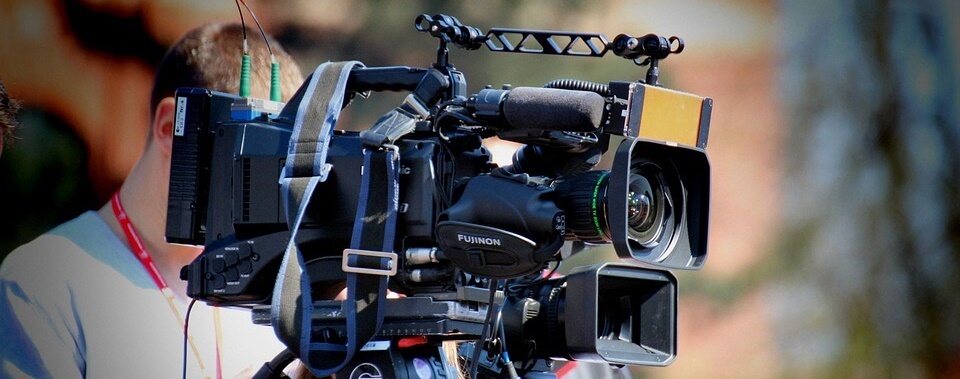William Hereford is usually the man behind the camera. Yet, when planted squarely in front of the lens, he exudes a well-worn sense of ease. Maybe he’s tired. Or hungover. Or maybe it’s because he can finally relax.
In the five years that he’s lived in NYC, he’s juggled a variety of roles behind the camera: from assistant to cinematographer to full-time photographer. He may have not hit his professional pinnacle just yet, but he’s certainly underway. And that’s something worth smiling about. William, a historical theory major in school, considered going the documentary route after college, but then, in his own words, he “geeked out” over cameras. His foray into photography became all-consuming. Then again, it had to be. After doing the math, he realized he needed to write over 1,000 emails every other day to generate one job. So he got to work. He took on random photo gigs, the occasional indie, and began shooting behind-the-scenes video on sets. Eventually, he landed an assisting job with fashion photographer Chris Craymer. He was on his way.

It was on a food set that William realized how much he enjoyed hanging out with chefs and talking to them about their craft. Fashion was a job; with chefs and foodies, he wanted to know more. The work of Roland Bello, photographer at the now defunct Gourmet Magazine who became renown for lending food photography a lifestyle imprint, was a special source of inspiration to him. Yet William was interested in more than print. Two years ago, he created an evocative three-minute-long video, Cooking Dinner, that visually outlined the steps involved in roasting duck breast. The recipe video combined the simplicity of a print ad with the narrative of film. Even better, the pared down piece spared the viewer from the constant dialogue of a cooking show. The piece exploded online and William found himself directing shoots for SAVEUR, Tasting Table and Anolon. William is far from a one hit wonder. If anything, he’s part of a new generation of photographers and filmmakers who develop content that can live across multiple platforms: from print to web to tablets. As he describes it, “If you have a camera and are creating great, tasteful content, you have more opportunities.” Well said William.
Q – William, from what I gathered while poking around your well-stocked kitchen shelves, you’re a man at ease in the kitchen (you’re also in the market for a wood stove). What came first: the interest in food photography or your love of food?
A – I’m actually quite new to cooking. I assisted Chris Craymer, a fashion photographer, for a couple years before breaking out on my own. I always assumed I’d shoot portraits and fashion. I kind of fell into the world of food after shooting a video test for a publishing company. I was up for a cookbook with a large video component and they were curious to see how my video work would look like when applied to cooking. The video took off and I’ve been booking clients in that world ever since. I find that it’s not the plated food that inspires me, but everything that happens around it. My work is kind of a lifestyle-food hybrid. It’s rare that I’m not shooting one without the other.
Q – The surge in foodie blogs, curated search engines like foodgawker and Pinterest and reality TV shows have made food photography a trend. Has this impacted your profession at all?
A – It hasn’t affected me personally, but I think it is definitely changing the industry. If you’re capable of capturing the attention of 300,000 people with your blog, then you’re a brand and magazines and advertisers have an incentive to hire you simply because you can guarantee an audience. I’ve taken a very traditional approach: I work very hard at connecting with new clients, because I enjoy assignments and contributing to something bigger than my own work. I applaud bloggers for taking matters into their own hands, but, personally, I like seeing my work in print and love collaborating with editors.
Q – Whether it be food, lifestyle or fashion, what makes an image strong in your book?
A – A sense of timelessness.

Q – You grew up in Charlottesville, Va., went to school in Maine, studied abroad for a semester in Sicily, and now live in Brooklyn. Where do you feel most at home?
A – With my girlfriend Alyssa.
Q – Do you relish the freedom you have as a freelancer or do you ever wish for more consistency?
A – My freedom is the most important thing in my life. Growing up my dad always preached about “freedom” and what that means. For him, freedom is being able to pay your electricity bill and manage your own time. I agree with that sentiment, but more than time and money I love my trade. Since I work for myself, I’m able to develop and experiment with full artistic license. I think that makes up for the sporadic inconsistencies in my schedule.
Q – Foremost, you’re a photographer, but you’ve created some excellent video content as well. How do you manage to do both in a single shoot? Do you prefer one over the other?
A – If I’m going to shoot video and stills simultaneously, I usually urge the client to decide which one is more important and then cater the shoot accordingly. If it’s primarily all about video, I push for the RED camera so that we have the possibility of pulling stills from the footage. If it’s a stills shoot, I try to manage clients’ expectations concerning the video. Video is about process and stills are about moments. I think its important to choose one and consider the other a “bonus.” To do video well, really well, you need a budget. I don’t think that’s necessarily true with stills. Money doesn’t hurt, but a single individual with a stills camera can create something visually extraordinary. I find it hard to believe that’s possible with video. I don’t favor one over the other; I just want the necessary tools and time to do the job right.
Q – When do you mentally map out what you’re going to wear to work the next day?
A – Right before I go to bed.
Q – What are some of your favorite places to shop?
A – I tend to wear Ben Sherman, J.Crew, Odin.
Q – What work outfit gives you that “on top of the world” feeling? From what you’ve told me, you’re a man who firmly believes in the idea of a go-to outfit.
A – I like the idea of a uniform. For me, it’s a solid button down shirt with jeans or chinos. A good friend once explained to me that anyone, irregardless of whether you’re a scientist, painter, politician or laborer, can pull off a button down shirt with ease. I love that idea for some reason: that it’s not what you wear but how you wear it.